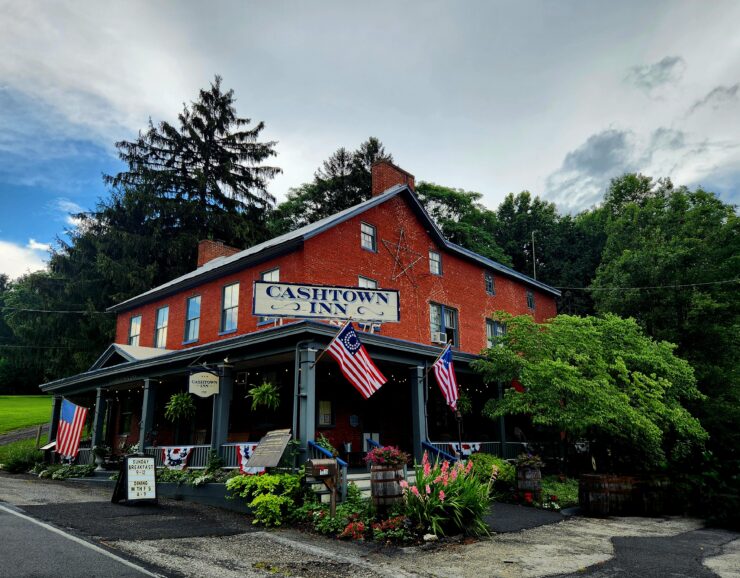If old walls could talk, the hauntingly beautiful Cashtown Inn would tell you stories to keep you up all night. Tucked into the quiet countryside just a few miles from Gettysburg, Pennsylvania, this historic inn is steeped in Civil War history, ghostly legends, and small-town charm. It’s the kind of place that makes you breathe in the past, and maybe—even if you don’t believe—sleep with one eye open.
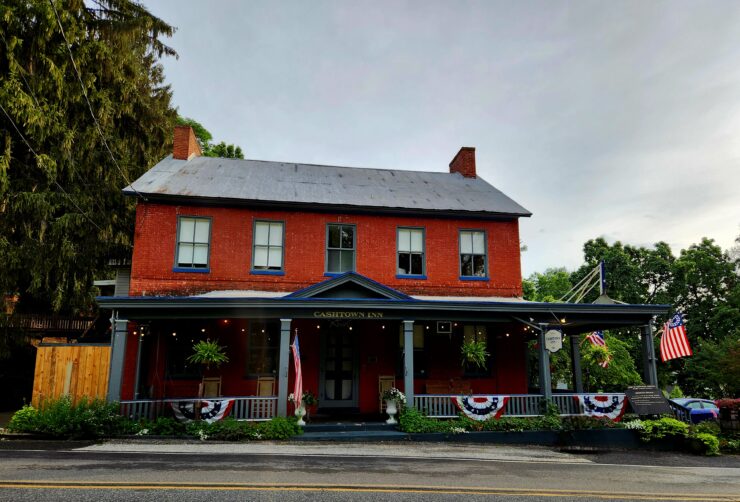
Discover a Hauntingly Historic Gettysburg Accommodation
Built in 1797 as a private home, the Cashtown Inn soon served as a stagecoach stop before evolving into a tavern with four rooms in 1818, about the same time the Gettysburg-Chambersburg Turnpike (a private toll road) was constructed directly in front of the Inn. Travelers passed through six toll gates (gatehouses) when traveling from Gettysburg to the summit of South Mountain.
The toll for the entire route was one dollar. The term turnpike evolved from the term “pike,” which was a spiked pole barrier that was “turned” upon payment to allow a vehicle to pass over. Eventually, “turned pike” became “turnpike,” and was used to describe the road itself. The state purchased the Turnpike in the 1920s, and it became a toll-free road, part of the Lincoln Highway, and later part of Route 30.
Cash Only
Innkeeper Peter Marck’s policy was to accept only cash payments—a reasonable request in a time when bartering was common, but one that left its mark. When he informed a visitor he had to pay in cash, the man exclaimed, “This must be Cash Town!” and thus the name was coined. Cashtown, the village that sprang up around the Inn, took its name from the Inn. Today, you’ll find Orrtanna on maps, but Cashtown on signs.
The Inn became especially significant during the Civil War. In late June 1863, just days before the Battle of Gettysburg, Confederate General A.P. Hill used the Inn as his headquarters. Troops from Hill’s Third Corps camped in the fields nearby, and the road outside saw a steady stream of soldiers, supply wagons, and chaos.
The Inn also served as a Confederate field hospital, and the cellars reportedly saw amputations by candlelight. That weighty history lingers in the creaking floorboards and flickering candlelight.
Many Civil War buffs consider the Cashtown Inn a hidden treasure—a site where you can not only learn about the past but sleep in it. It is also the place of the first Confederate casualty. Eli Amick of the 14th Virginia Cavalry, from Greenbrier County, Virginia, was killed on June 23, 1863, by a bushwacker. In the face of approaching troops, John Burns, a 69-year-old Gettysburg resident, dressed up (top hat and tails), shouldered his flintlock rifle, and marched off to McPherson’s Ridge, where he fired shots at some rebels. He managed to hit one and then hid in the woods for 12 days in fear of retaliation.
Cashtown Inn: Sleep Where Civil War History Lingers
Today, the Cashtown Inn continues to welcome guests. Each of the seven antique-furnished rooms has a historic name—I stayed in the A. P. Hill Bedroom. And each has its own unique story. The front porch is wide and welcoming, dotted with rockers and the required swing.
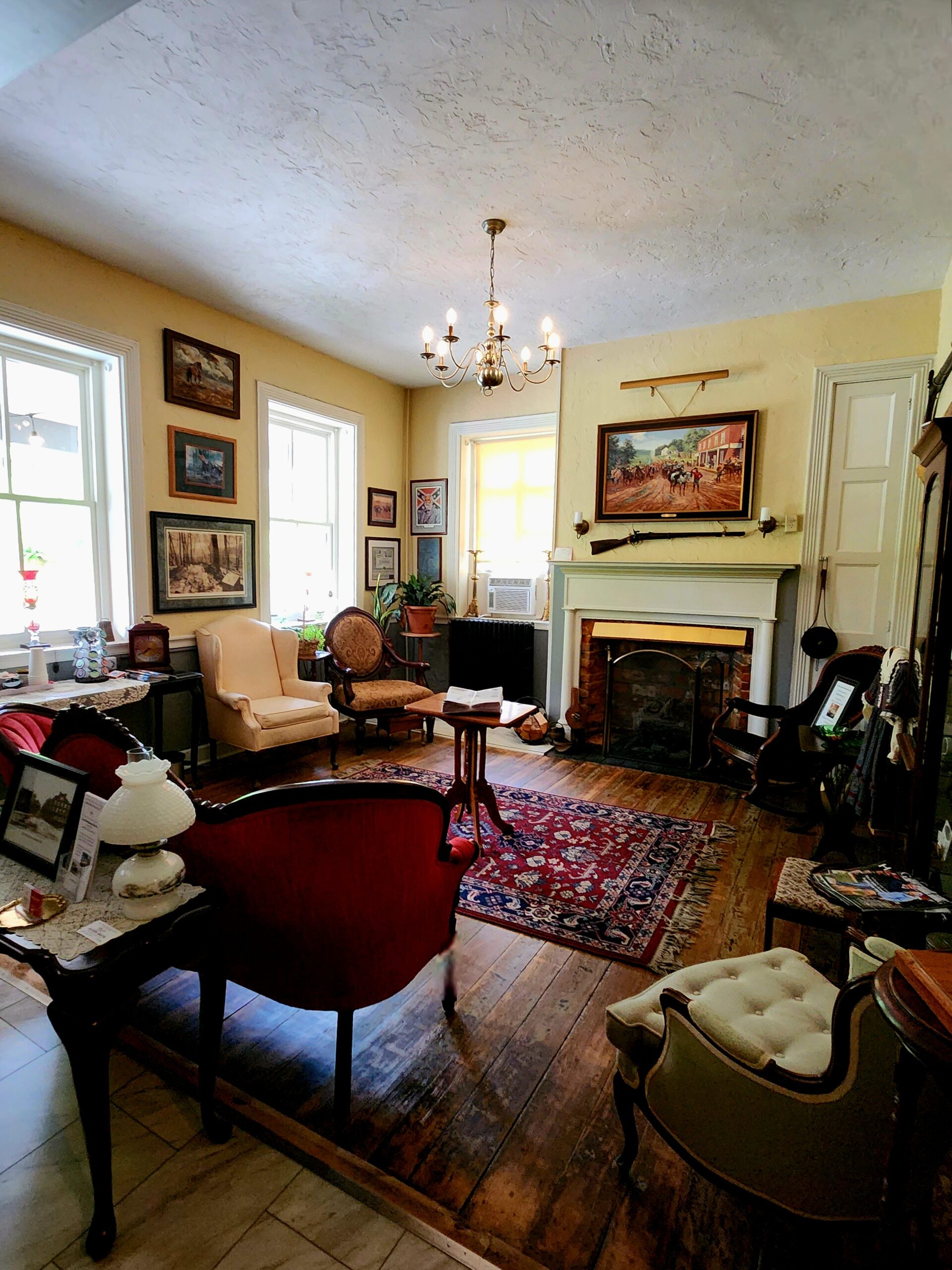
Inside, the Inn is cozy and filled with artwork, some of which depicts the Cashtown Inn during the Civil War era. Owners Jeremy and Danielle Davis pulled up multiple layers of floor coverings, exposing the original wide-plank floors where Generals Robert E. Lee and A. P. Hill paced 162 years ago. The house holds original fireplaces, and oil lamps still burn in the evening.
The 1797 Inn features five bedrooms, plus two additional bedrooms in an addition at the back. The owners have several other rental properties nearby, which can accommodate larger families or groups; the largest can accommodate up to 14 people.
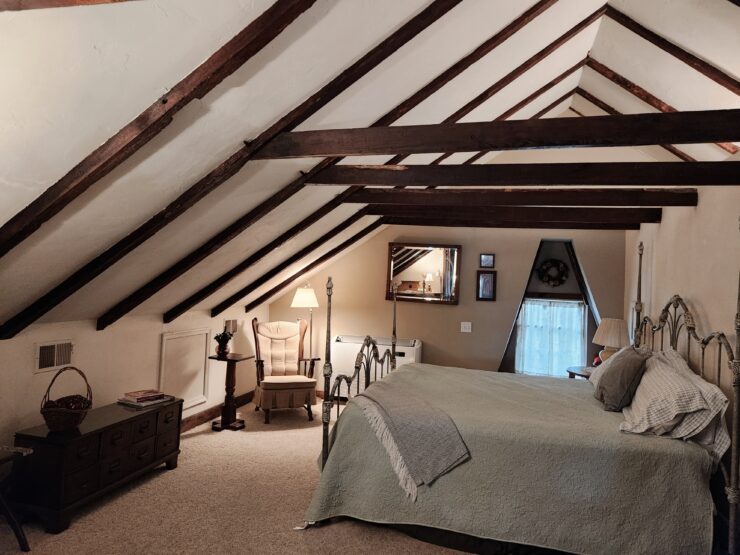
A Room at the Inn
My room featured a four-poster bed, floral wallpaper that felt right out of the 1800s, and a little vanity desk tucked under a window that looked out on the road to Gettysburg. It wasn’t hard to imagine General A. P. Hill penning a letter—maybe to his mother, maybe to his wife and three young daughters, the ones he most longed to see.
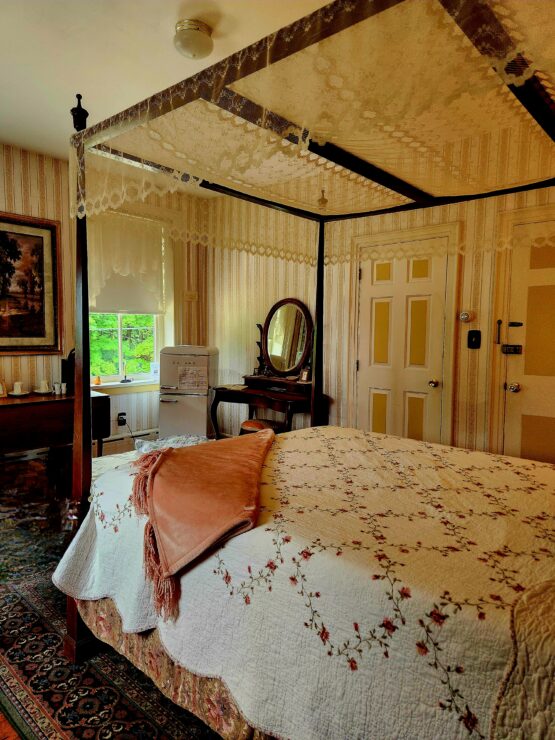
Modern amenities included a 21st-century water closet and a mini refrigerator with a large freezer, perfect for making ice blocks to keep my water mug cold throughout the day. The staff is quite accommodating; if an extra bed is needed, a twin bed appears as if it has been spirited into the room, made up, and topped with a quilt.
And yes, I’ll admit it: When the lamp flickered late at night, I paused, just for a second. The Inn does have a reputation, after all.
The Cashtown Inn: Haunted, Historic, and Unforgettable
The Cashtown Inn is considered one of the most haunted sites in the Gettysburg area—and in a region known for its ghost stories, that’s saying something. Numerous guests (and some staff) have reported mysterious sounds (footsteps on the stairs, perhaps?), disembodied voices, and doors that open and close on their own.
One of the most commonly reported apparitions is that of a Confederate soldier, often seen in the hallway or peeking into rooms. Another is said to be a surgeon still lingering in the basement, carrying out his grim duties. Skeptics may scoff, but the Inn’s long history—and its role as a Civil War Hospital—make it a hotbed for ghostly speculation.
Even if you don’t encounter anything otherworldly, the atmosphere here is undeniably charged. It’s not frightening, but it is intense—especially if you tour the basement. Or maybe the energy running up my spine was due to my Southern roots and my loss of two great-great-grandfathers at Gettysburg.
Headed to Pennsylvania? See Six Things to Do in the Laurel Highlands.


© Jo Clark
Dining With History
You will start your day in the tavern, having the daily breakfast special. Or you can place your order for something else. The cook, Andy, happily grants your wish. But if they are having apple sausage and French toast, don’t turn it down. While you enjoy your meal, you’ll be treated to a lecture by Cashtown Inn Historian Bruce Kottke. Afterward, he will take you on a tour of the cellar.

There is no need to venture far for dinner—the Cashtown Inn offers a restaurant and tavern, both open to guests and the public for brunch on Sunday, and dinner Wednesday through Saturday. The tavern retains its original walls and wood-beamed ceiling. It’s precisely the kind of place where you want to sip something strong on a chilly evening (even if you’re there in July).
Eating with Comfort
The menu leans toward classic comfort food, with regional touches like apple-stuffed pork chops and hearty stews.
My favorite? A generous slab of prime rib that Chef Bill blackened, then topped with crab meat and a hollandaise-blue cheese sauce. But then, there was that delectable appetizer of shrimp scampi with crab added—maybe that was my favorite.
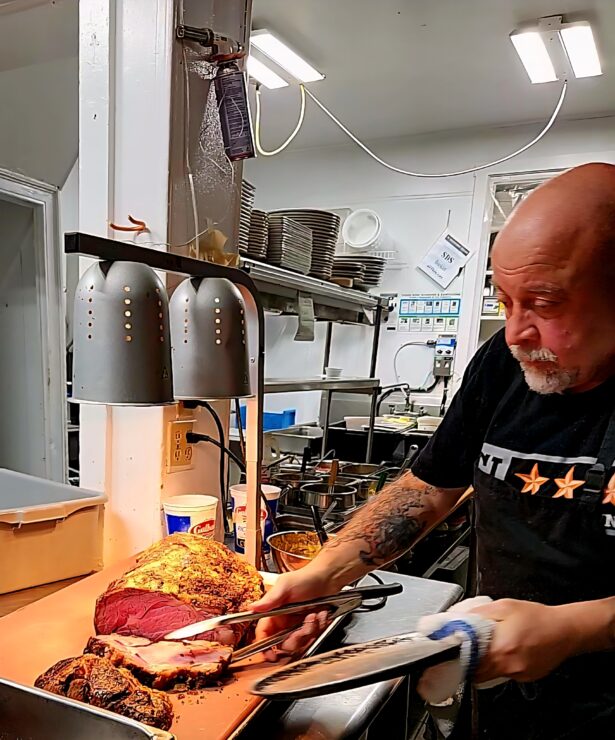
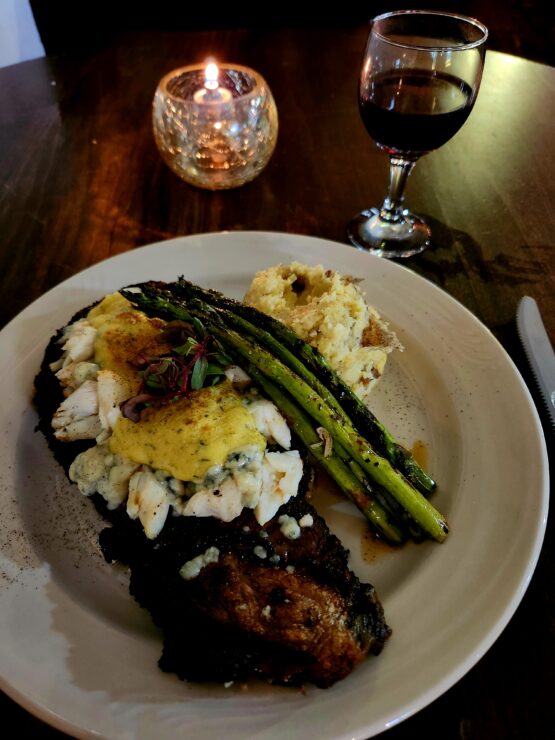
© Jo Clark
The bar features a well-curated list of local wines, and with the ABC license pending, they’ll soon be pouring local libations. For now, you can enjoy a complimentary wine with your entrée. And, the servers are always happy to chat about the Inn’s history—or share a ghost story or two.
Exploring the Area
The Cashtown Inn is a peaceful retreat, yet ideally situated for exploring the greater Gettysburg area. The Gettysburg Battlefield is just a 15-minute drive away, and the scenic Lincoln Highway connects the two. Be sure to stop at Sachs Covered Bridge along the way—it’s one of the most photographed spots in Pennsylvania, and the bridge is rumored to be one of the most haunted, too.

/Downtown Gettysburg offers a wealth of museums, antique shops, cafés, and distilleries. The Gettysburg National Military Park Museum and Visitor Center is a must for any first-time visitor, especially the Cyclorama and the battle artifacts. And Jennie Wade’s home offers tours (Jennie was the only civilian casualty of the Battle of Gettysburg).
Nearby Attractions
Closer to the Inn, you can wander the countryside on quiet backroads that still look much like they did in 1863. Apple orchards dot the landscape, and depending on the season, roadside stands offer cider, pies, and jars of local honey.
Also nearby, you will find the picturesque Adams County Winery, bottling wines like Tears of Gettysburg, Yankee Blue, Rebel Red, and Traveler (General Lee’s horse). Oh, and of course, Apple Pie, which hit the spot for me. After tasting some local wines, take a glass out to enjoy on the patio, surrounded by heirloom flowers, butterflies, and hummingbirds.
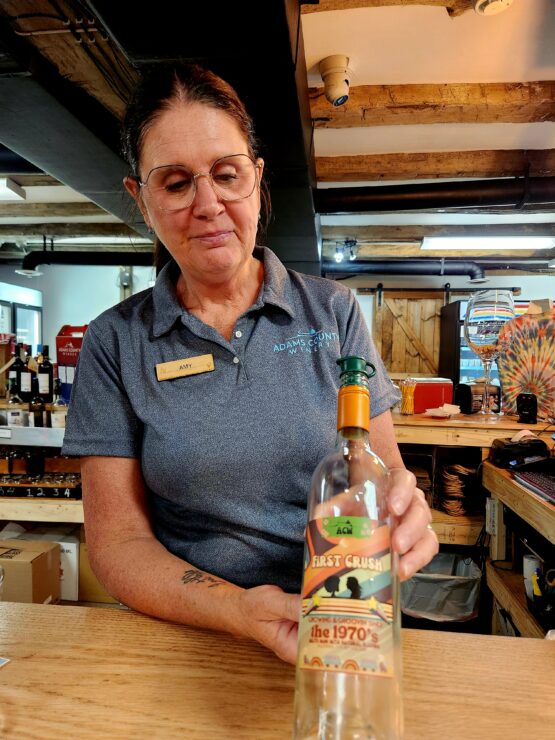
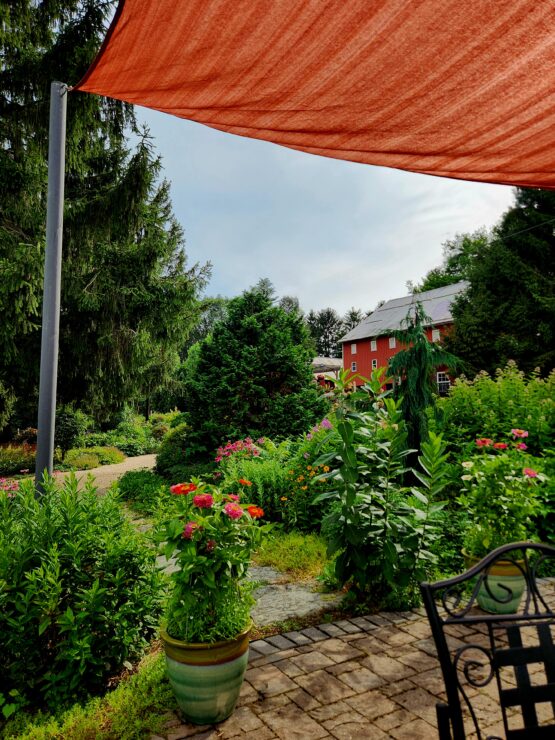
Where the Past Still Whispers
The Cashtown Inn isn’t just a place to stay—it’s a place to feel. Whether you’re coming for the history, the haunting, or simply a quiet weekend wrapped in old-world charm, this inn delivers.
There’s something powerful about sleeping in a place that has seen so much life—and so much loss. You sense it in the hush of the hallways, the candlelit corners, and the echo of bootsteps long gone. But it’s not morbid. It’s reverent. And if you’re anything like me, you’ll find yourself strangely comforted by the company, seen or unseen.
So bring your curiosity. Bring your camera. And bring your flashlight…after all, you never know.
You might also enjoy:
You can find links to Jo’s articles on HaveGlassWillTravel and RecipesTravelCulture, and hear her monthly podcast at https://jogoeseverywhere.podbean.com/.

